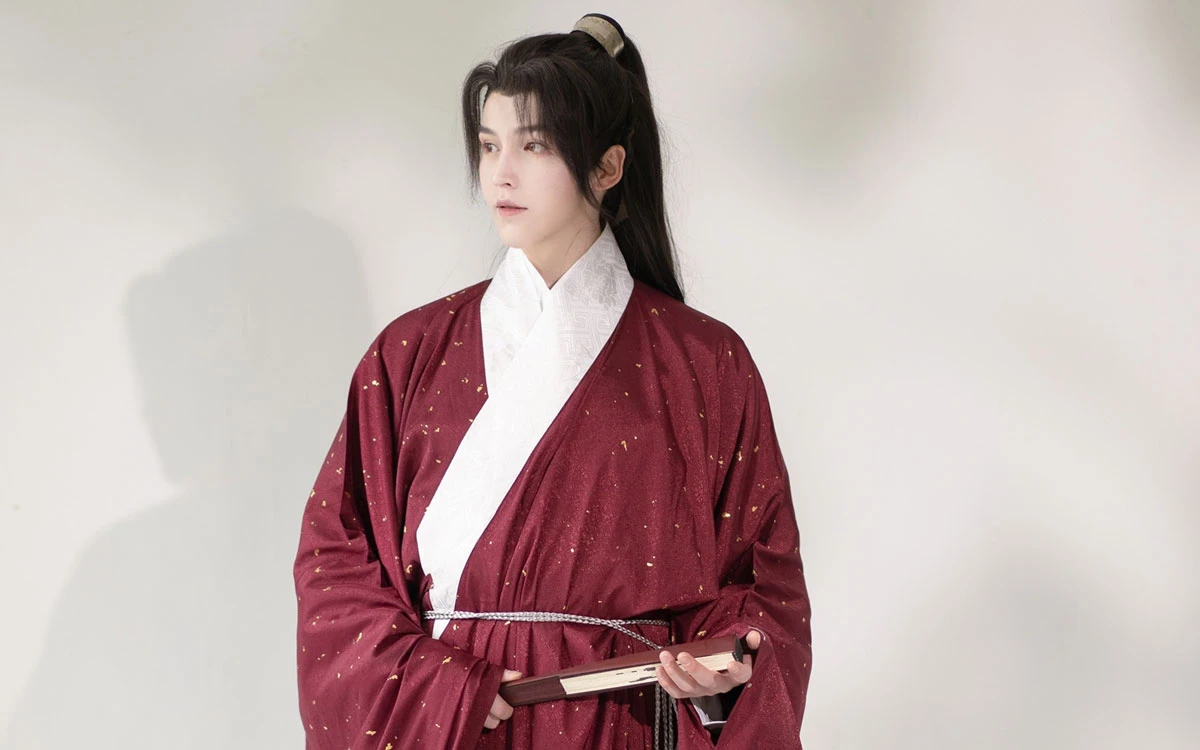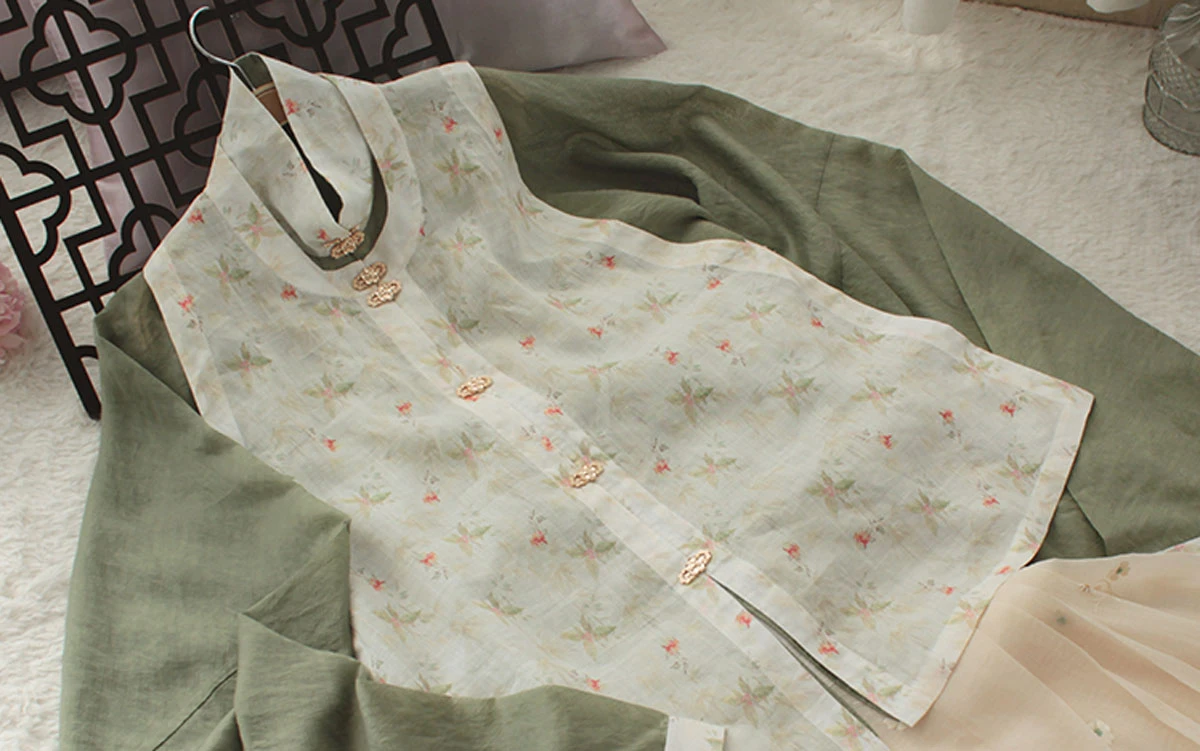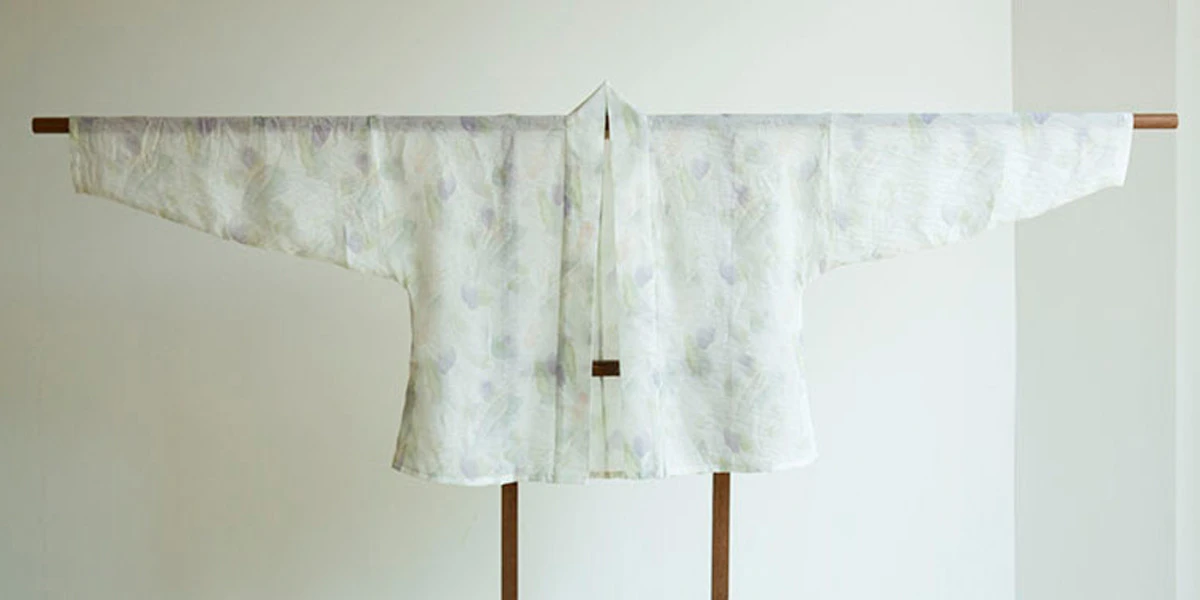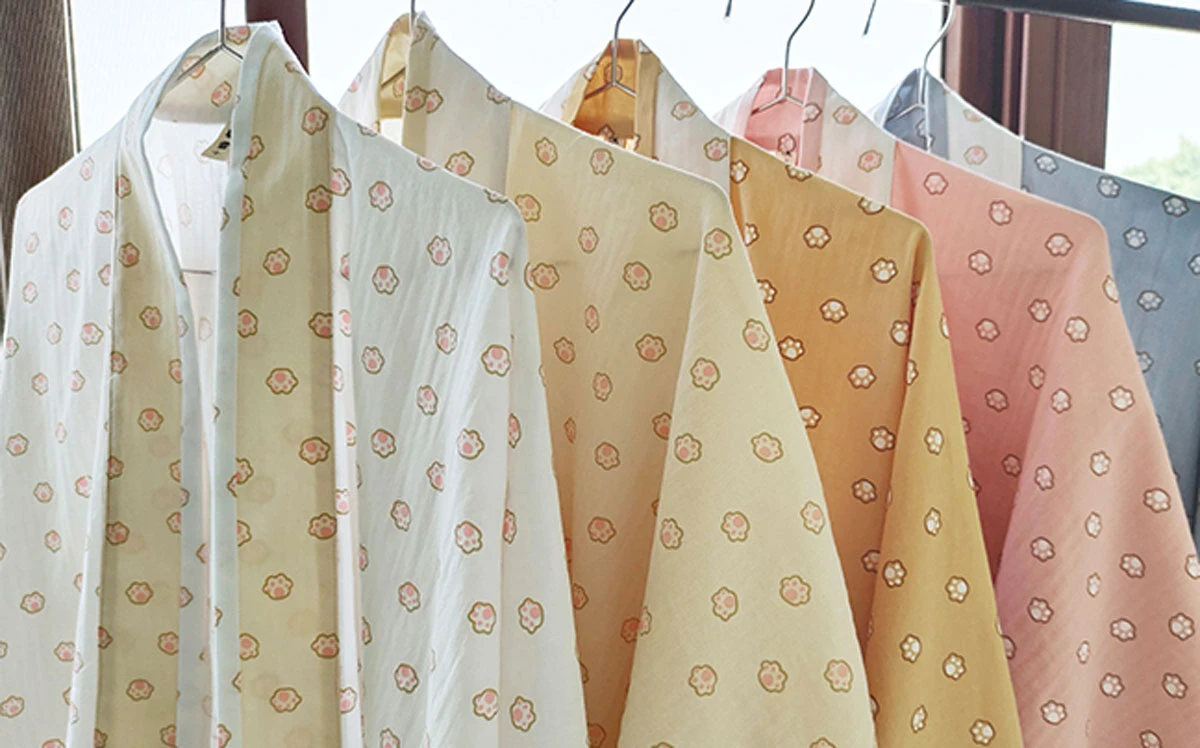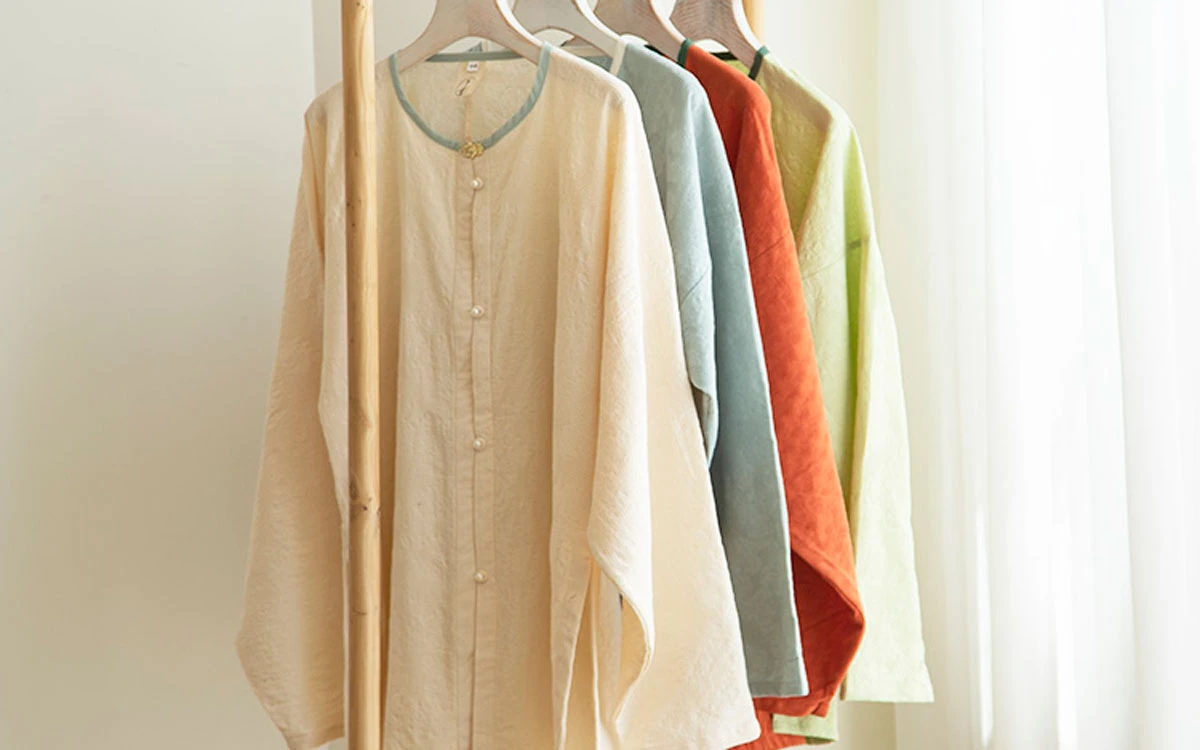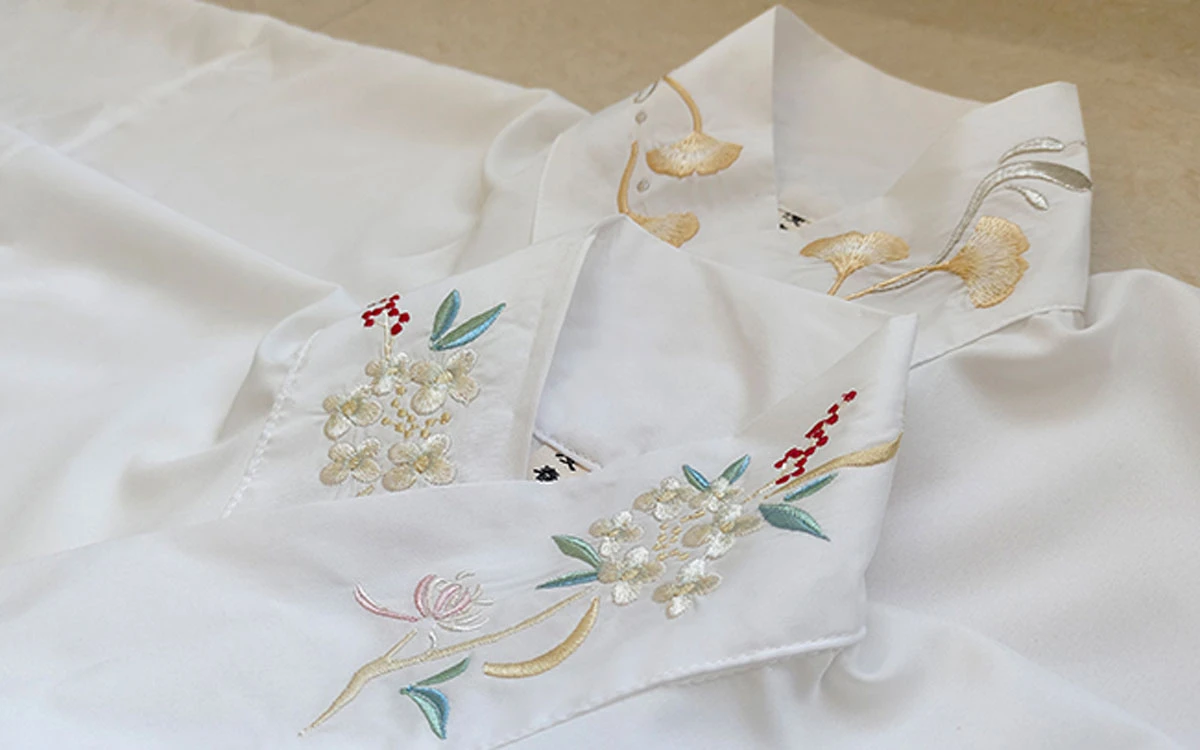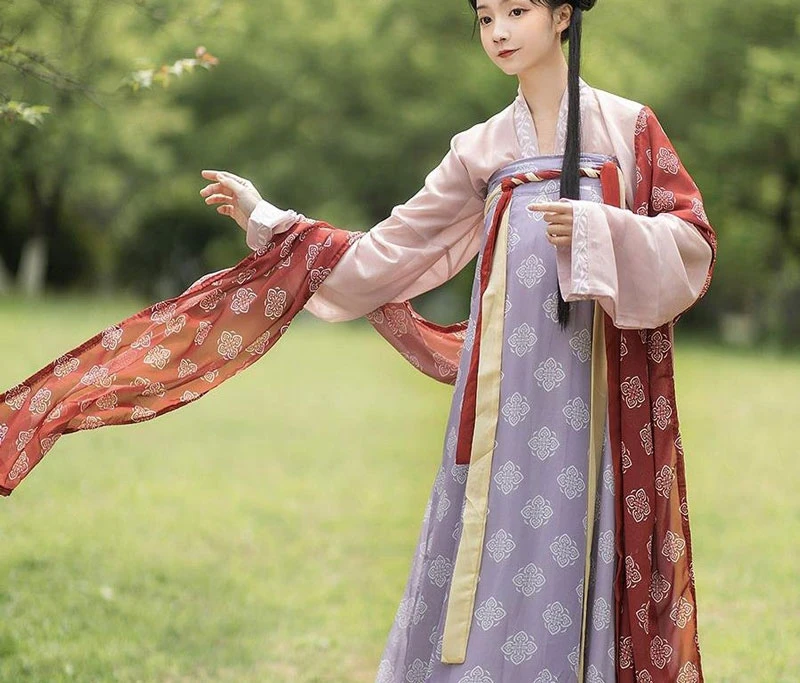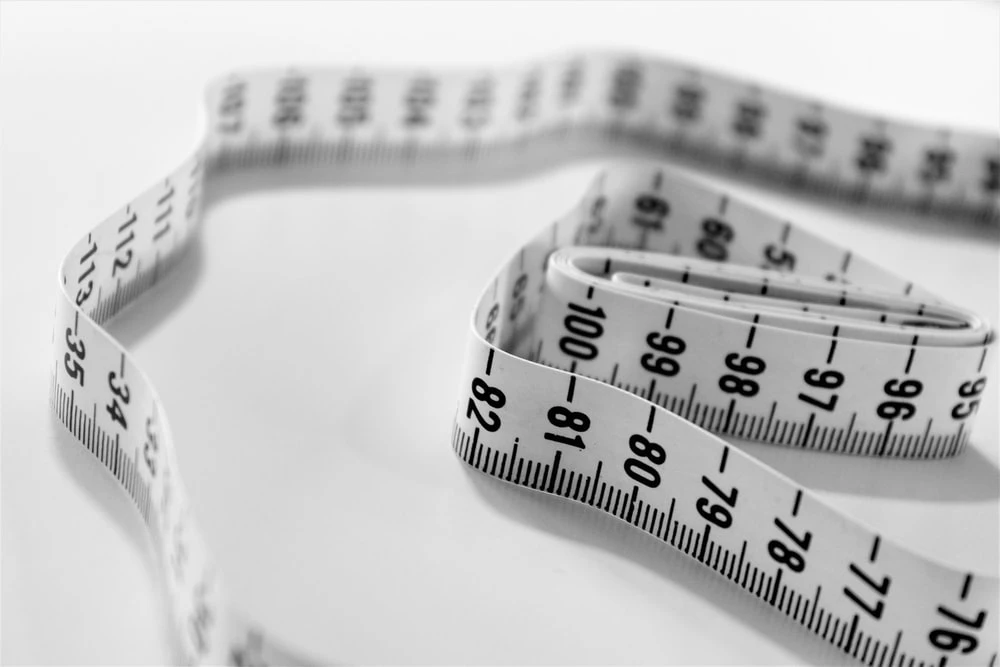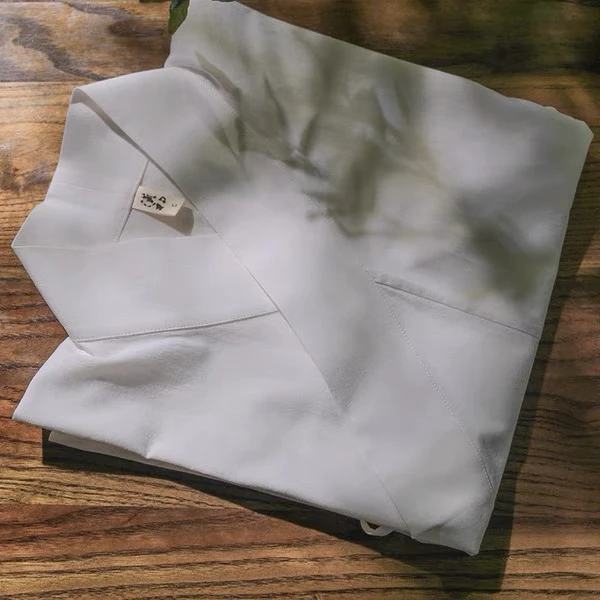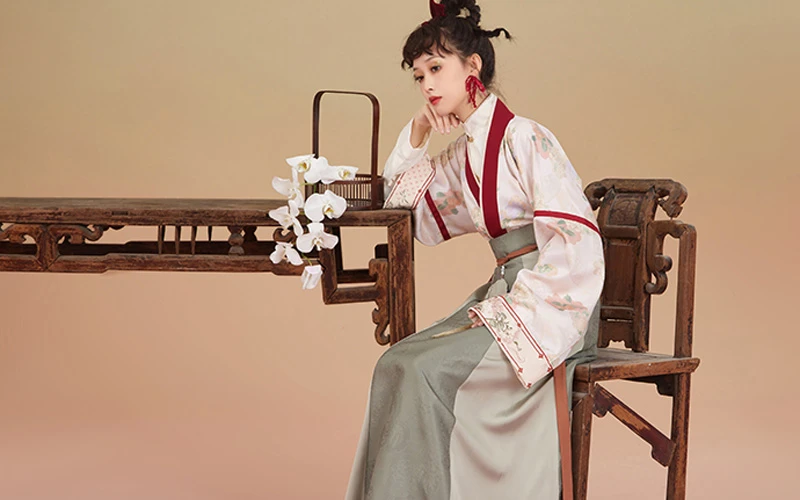
Hanfu in Components
Introduce hanfu into its basic components, talk about what parts make up a piece of han clothing, and briefly explore the shape, history, and pattern of each part.
Total 9 Articles
Topics: 12
-
Hanfu in Components VI: Putting It All Together
So now that you’ve learned about all these pieces separately, we arrive at the question: how do we put all of these pieces together? Let’s go over some ways these are usually put together, how to refer to them, and other details that might not have been covered in previous articles. Body, sleeves, collar: these are the main three things that we use to distinguish types of hanfu. In naming conventions, we usually refer to a piece in the order of collar-sleeve-body. Take a look at this image: What body type, sleeve type, and collar type is it? Well, I’ll tell you first that this is a Shan, meaning that it’s a single-layered top or robe shorter than the knees with no yao lan. Take a look at the sleeves—do they curve or change in diameter at all? Yes, they seem to narrow in a striaght line from the root of the sleeve to the cuff, meaning this is a feijixiu design, or airplane sleeve. The collar’s shape is pretty obviously parallel, or duijin, since the two sides come straight down and don’t touch. Well then, we can refer to this as a duijin feijixiu shan: a parallel collar, airplane…...redsugarx
- 2.1k
- 6
-
Hanfu in Components V: Collars
"Collar" refers to not only the area of a piece of clothing around the neck, but also the fabric below that. Since hanfu is almost always constructed of two pieces of fabric that aren't fully connected at the front, and put on like a jacket, collar also refers to ways that these two piece of fabric connect once the piece is on your body. 交領/交领/jiao1 ling3/Crossed Collar Probably the first type of collar that you’ll see—the crossed collar, or jiaoling. This collar consists of two overlapping pieces and is usually secured with two to three ties, with a thicker or contrasting border along the edge of each piece. It’s almost always right over left, or if you think about it in terms of how to put it on, you tie the left ties before you tie the right ties. The result is a y-shaped collar when viewed from the front. Ming dynasty people may have done it the other way, as well as various non-Han groups and clothes put on the deceased at funerals, but it’s generally a good rule of thumb to follow right over left. as it’s one of the most important cultural concepts in hanfu. These…...redsugarx
- 1.9k
- 8
-
Hanfu in Components IV: The Sleeves
As one of the main composition elements of hanfu tops and robes, sleeves can have a lot of variation. They mostly fall into a couple categories that we have recovered historical artifacts from, though a lot of manufacturers end up with some variation in their patterns. Today we’ll go over a whole ten sleeve types, a bit of historical context, and some of the variations they can go through. Before we get into that, though, let’s go over a little basic information that applies to (almost) all hanfu sleeves. One of the defining characteristics of the hanfu is the 接袖/接袖/jie1 xiu4/sleeve connection. What this means is that the sleeve is not connected to the body of the top or robe at the shoulder, but at a point partway down the upper arm, with the body of the clothing and part of the arm being made up of one piece of fabric, and the rest of the sleeve of another. These are stitched together to create the whole sleeve. The rest of the sleeve is also made of one piece of fabric both front and back, folded over the top and stitched together at the bottom. Some exceptions to this are…...redsugarx
- 1.9k
- 5
-
Hanfu in Components III: The Body
The construction of the body of most hanfu tops and robes is what usually decides what ’type’ of hanfu it is. We’ll go over a few common types of hanfu and what features they have. There are, however, a few rules that pretty much all hanfu tends to follow: First, there’s always a seam down the middle of the back, meaning that the piece of clothing is made up of one piece of fabric on the left and one on the right, stitched together in the center. There’s also never a seam at the shoulder like we have in modern clothing—instead of the front and back being two different pieces of fabric, the front and back are made up of the same piece, just folded over the shoulder. Another thing to note is that while we often refer to tops and robes in hanfu as the two main categories, that isn’t how hanfu is really categorized, just a way for us to talk about the shape of things in English. Instead, we have the 長/长/chang2/long versions and 短/短/duan3/short versions of clothing, which can be applied to most categories of clothing that we separate by construction—the only difference is length. Short…...redsugarx
- 1.7k
- 3
-
Hanfu in Components II: Hanfu Construction
First installment of the Hanfu in Components series is up! As a reminder, if you haven’t already, check out the introductory article to best find out how to use this guide, otherwise some things might not make sense to you. If you’ve done that already, charge on forward! To kick off the series, this is a brief article explaining how exactly we’re going to break down hanfu into its basic components. We’re still in the introductory stages here, but bear with me and we’ll get to the fun stuff soon. WHAT MAKES HANFU, HANFU? What defines 漢服/汉服/han4 fu2/hanfu? What sets it apart from everyone else? How do we know when something is truly hanfu, as opposed to hanfu-inspired? These questions can be kind of scary when you first look at them, scared of making a mistake—don’t worry, it’s actually pretty simple! First, we should understand that hanfu isn’t just something that we derived off of paintings and imperial dramas. Every type of hanfu that we have today was recovered as a rotting piece of cloth that we dug up from the ground, studied by historians and made into clothing patterns (‘pattern’ refers the shape of the fabric pieces and…...redsugarx
- 1.7k
- 4
-
Hanfu in Components I: Introduction
Hey again everyone! I’m super excited to be introducing a new series that I’m going to be writing over the next few… days? weeks? However much time it takes me to get all of this out! This collection of articles, Hanfu in Components, is a perfect introduction for those of you semi-newbies who feel a little overwhelmed by all the different kinds of hanfu and want to learn more beyond the very basics but can’t find the best place to start. We’ll break down hanfu into its basic components, talk about what parts make up a piece of han clothing, and briefly explore the shape, history, and pattern of each part so that you can get familiar with the way that hanfu is pieced together, no deep historical background needed. WHAT THIS SERIES WILL COVER Introduction (this article) Hanfu Construction Tops & Robes (Body) Sleeves Collars Putting it All Together WHAT THIS SERIES WON’T COVER (may change in the future): Skirts (but you can find my article about Types of Hanfu Skirts here! Also may change in the future) Pants (may change in the future) Hanfu underlayers (but you can find my article about Basics of Hanfu Underlayers here!…...redsugarx
- 1.7k
- 7
-
7 Types of Hanfu Skirts That You Should Know
As requested by user @Wei on my Mamianqun article, here’s a little summary of all the most popular hanfu skirt (qun or 裙) types and what the difference between them is! I’m not going to go into as much detail as the previous article since my goal is to go through them all quickly and teach you the differences between them, but I’ll be including some brief details on their name, history, construction, and features so that you can better understand the huge variety of skirts in hanfu. Let’s start off with some basics rules hanfu skirts tend to follow. Skirts are made up of one or two pieces of fabric, usually, and they take the shape of a flat piece of pleated or non pleated cloth that gets wrapped around the body and tied in place by ribbons/ties. There are very few exceptions to this, except in hanyuansu, which is modified hanfu for convenience and style. The waistband of the skirt is usually 6-8cm wide and made with a different piece of fabric than the body of the skirt, which the body of the skirt is then attached to—this is referred to as the skirt head (裙頭). But even…...redsugarx
- 6.6k
- 12
-
Common Measurements of Hanfu - Wear Guide
Hey everyone! So there were a couple people in my hanfu server asking about what different kinds of measurements of hanfu were. I answered and did a little compilation of the most basic measurements that you'll see on most sizing charts, if you're choosing a size and buying from a vendor, as well as some that are often used to create patterns and the like. Hope that it's a helpful reference! I've included both traditional and simplified characters in this for better reading and some of my own notes as helpful explanations, let me know if there's any questions you need answered. Body Measurements Let’s start with the basic measurements of your own body. 身高 - Height. Usually in centimeters, if you don’t understand any of the other measurements, this is the one you want to go by. 體重/体重 - weight. often comes up in either kg or lbs, and it’s pretty easy to figure out which one through common sense. I would recommend that you don’t trust this one too much though since everyone is like… a different density. 三圍/三围 - three rounds, the standard starting point for more detailed measurements. These include the three below: 胸圍/胸围 - the…...redsugarx
- 2.4k
- 4
-
The Basics of Hanfu Underlayers
Ready to start deepening your hanfu wardrobe? Start looking into some of your closet staples here: hanfu underlayers!...redsugarx
- 2.6k
- 6
